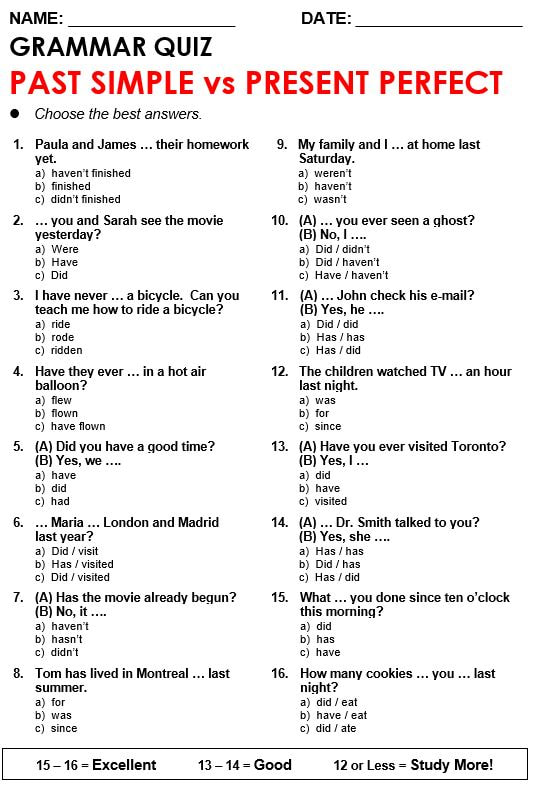
How is the past time involved in these tenses? (Meaning: the first time I played before an audience was in my audition.) The timelines of the present perfect and the past perfect When I auditioned for the music scholarship, I had never played the piano before an audience. (This means that up until now, this has been my experience.) I have never played the piano before an audience in my life. These examples will make this point clearer: And with the past perfect, we look back from a specific time in the past. But what does it mean?īy definition, the perfect aspect looks back from a specific point of time and refers to all those things that occurred up to that time or that are relevant at that time.Īs implied by their names, with the present perfect we recall the past from the present. The perfect aspect of these tenses might be the source of confusion for some learners. Of course, their differences go beyond the way they’re structured, so let’s get down to them now. Have/Has + Past Participle The past perfect:

THE PAST PERFECT Present perfect and past perfect structuresīefore digging deeper into this topic, let’s quickly review the structures. So, let 's get started! THE PRESENT PERFECT VS. Using adverbs with the present perfect and the past perfect

The timelines of the present perfect and the past perfect Present perfect and past perfect structures In short, we use the present perfect to talk about recent or past events that happened at an indefinite time, and we use the past perfect to refer to something that occurred before something else. So what’s the difference between the present perfect and the past perfect? It’s actually more common than you think.īut the good news is, the difference is pretty straightforward. Have you ever hesitated between choosing between the present perfect and the past perfect?


 0 kommentar(er)
0 kommentar(er)
